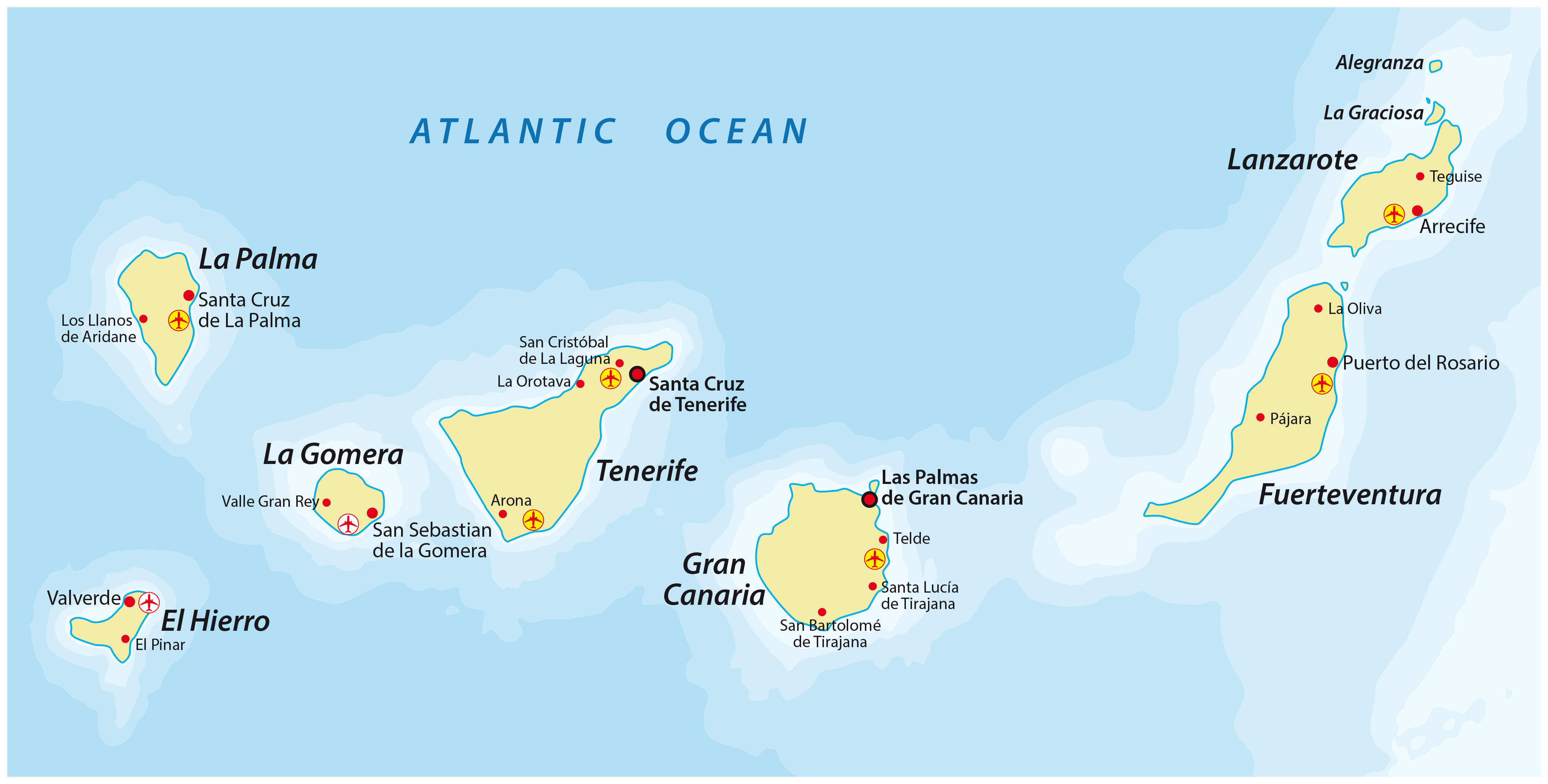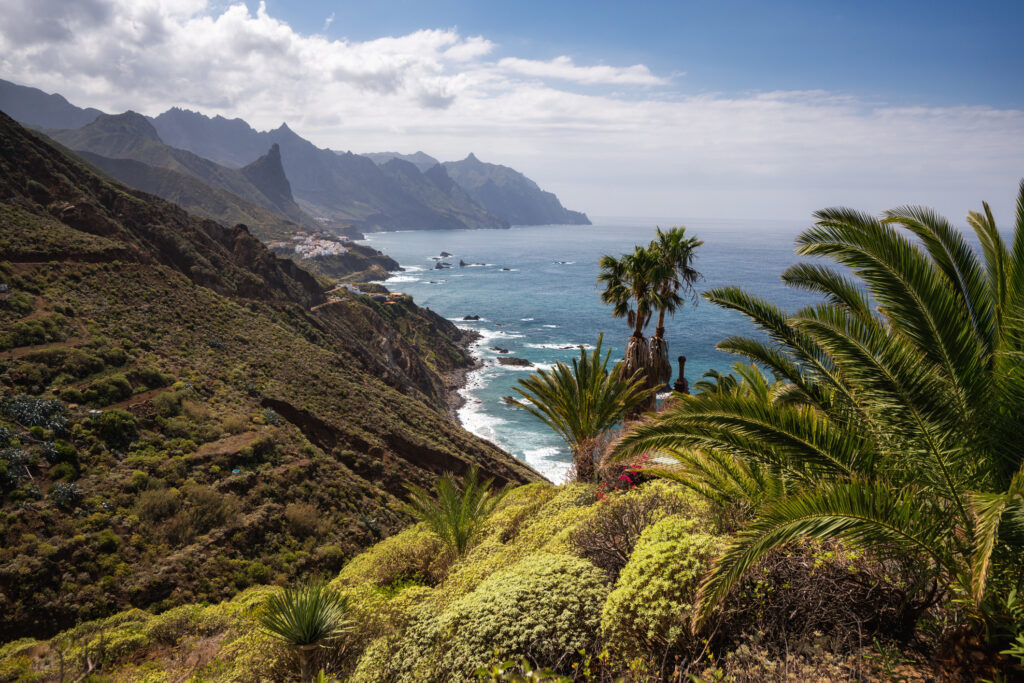Editor’s note: “Retire in the Canary Islands” is part of an ongoing series on retiring abroad. To see all the articles in the series, jump to the end.
First things first: Spain routinely polls as one of the most desirable countries for U.S. citizens to retire to. For general information about retiring in the country, check out our article, “Retire in Spain for Rich Culture, Cuisine and Coastal Bliss.”
However, the Canary Islands are distinct. The Spanish archipelago with seven main islands is one of those rare southern European destinations that Americans either know a lot about (LGBT folks can’t get enough of Gran Canaria) or nothing (“Is that, like, in Africa?”). Tourists are far more familiar with the Balearic Islands of Ibiza and Mallorca, which are plopped down in the Mediterranean off the country’s east coast, than the Canaries.
Sign up for Kiplinger’s Free E-Newsletters
Profit and prosper with the best of expert advice on investing, taxes, retirement, personal finance and more – straight to your e-mail.
Profit and prosper with the best of expert advice – straight to your e-mail.

(Image credit: Getty Images)
Part of that is location: Ibiza is just a 75-minute flight from Madrid. It takes more than twice as long to make it from Madrid to Tenerife, the largest Canary Island; the other major islands are Fuerteventura, Gran Canaria, Lanzarote, La Palma, La Gomera, and El Hierro. With the Canary Islands in the North Atlantic located off the African coast, they are much closer to Marrakesh than to Madrid.
Federica Grazi, who specializes in retirement relocations to Europe, says that interest in the scenic and sultry Canary Islands is on the rise. “The Canaries are extremely open and open-minded,” she says, noting that people don’t dress to impress — and sometimes don’t dress at all. Nudism is common on the islands’ beaches. English is widely spoken.

(Image credit: Getty Images)
Top two Canary Islands
Somewhat surprisingly, despite their relative remoteness, the Canary Islands are well-populated — at least, Gran Canaria and Tenerife are. More than 80% of the archipelago’s residents live on these two islands. Grazi says that Gran Canaria and Tenerife “are the most common retirement places for expats, because they are quite beautiful and laid-back,” and though they are touristic, they have proper cities where locals live and work. Grazi praises both the public transportation (buses) and the roads.
Santa Cruz de Tenerife is the capital of Tenerife; Las Palmas de Gran Canaria is the capital of Gran Canaria. Together, they are the co-capitals of the island group. “These islands are more developed, and they offer more access, in terms of infrastructure,” Grazi says. “This is especially important for retirees.” Happily, the cost of living in the Canary Islands is lower than on the Spanish mainland; in the cities, apartments containing more than one bedroom start at around $1,100/month. “Everything is lower,” Grazi says, “from housing to dining out. Dinner can cost $25 per person. It’s really affordable.”
“In the north of Gran Canaria, Las Palmas is very nice,” she says. “It has a beach, cultural events and festivals — it’s very vibrant and urbanized.” The city boasts Playa las Canteras, a great long stretch of sand. El Mercado del Puerto is a big draw for its food stalls, and Vegueta, the historic section, oozes with history and charm. Las Palmas Cathedral is a spectacular site, and though its interior is Gothic-style, it’s not austere: The rib vaults are meant to suggest palm trees. That captures the joyous, nature-loving flavor of Gran Canaria. One main hospital is in the city’s south: Hospital Universitario Insular de Gran Canaria.
“The south of the island has a more village vibe with a lot of tourists and hotels, relaxing 24/7,” Grazi says. Gran Canaria’s resort town of Maspalomas is a major LGBT destination, particularly the Yumbo Center in Playa del Inglés. Although Maspalomas is a planned resort development, it has abundant natural beauty — it is known for its palm groves and breathtaking sand dunes. Hospitales San Roque is a major health center in Maspalomas.
Santa Cruz de Tenerife, the most populous city in the islands, has a population of over 200,000 — that’s bigger than Fort Lauderdale and around the size of Baton Rouge or Glendale, California. It boasts a modern skyline and significant architectural landmarks like Santiago Calatrava’s Auditorium of Tenerife and a Herzog & de Meuron-designed, lake-like fountain in Plaza de España.
But the human touch is readily apparent: Puerto de la Cruz Market is beloved for its produce (it also carries clothing and ceramics), while Los Cristianos Street Market offers handcrafted goods, textiles, and second-hand goods. Foodies shouldn’t miss La Recova Market. One exotic aspect of the markets of the Canary Islands in general is that they display the cultural influence and products of the nearby African continent. Eight hospitals dot the city, including the Hospital Universitario Nuestra Señora de Candelaria.
For a change of scene from the two main islands, Lanzarote retains a kind of mystique. While it offers family budget vacations, it is becoming increasingly known for its celebrities and other high-net-worth people who holiday in luxury hotels or buy property there. The entire island, renowned for its dramatic landscapes, is a UNESCO Biosphere Reserve.

(Image credit: Getty Images)
Climate considerations
Location equals climate. Because of their southerly location, the Canary Islands are a warm, year-round destination, either to live in or to visit. (If you choose to retire there, expect friends and family to line up to stay with you.) You’ll experience temperatures in the high-60s and low-70s even in the depths of winter. “I go there quite often in January and February,” Grazi says. “You might need a jean jacket in the evenings.” Brave swimmers jump in the ocean in winter.
Note that climate change has been brutal to Spain, with sweltering summers in places like Barcelona, so that’s something to keep in mind if you’re thinking of retiring in the Canary Islands as well. Yes, the winters are sunny and glorious (beach weather, really), but the summers in these subtropical islands can be boiling — yet variable due to the ocean breezes coming from all sides. A single random July week may experience daytime temperatures in the 70s, 80s, and 90s, with nighttime temperatures a manageable 70 degrees. So, it actually may be cooler in the Canary Islands than in Madrid or Barcelona on a given summer week; of course, you’ll want to be near the coast.
Visa matters
Spain made headlines when it discontinued its golden visa program earlier this year, so for most retirees, the non-lucrative visa is the way to go. Grazi confirms that there are no special visa hoops to jump through if you want to retire in the Canary Islands: Spain is Spain.
It’s not especially arduous to meet the income threshold: The basis for your qualification is passive income, about $32,000 annually, or $2,600 per month. If you want to relocate with family members (spouse, parents, and children), that will cost you nearly $8,000 more per person per year, or around $650 a month.
If you’re a young retiree, be prepared to prove termination, resignation, or sabbatical from your last job (always a fun conversation to have with the boss, or former boss). But that’s the only requirement that might lead to an awkward moment. Everything else is easy, Grazi says. You don’t even have to show a cadenced monthly income; a healthy checking or savings account will satisfy the passive income requirement. You must gather your financial documents to demonstrate your solvency and your ability to provide for yourself — think retirement account statements, bank statements and tax returns.
The catch: You can’t work when you hold a non-lucrative visa, even remotely. If you want to helm your own business in retirement, you can explore converting to a self-employment visa. Grazi says that if you end up going that route, there are “regional” taxation differences in Spain when it comes to work (not necessarily relevant to passive retirement income), so it’s best to secure a local tax adviser. She works with several.
The first hurdle is to gain a one-year residency card. Once that year ends, you can apply for another two years, and then a final two. At that point, you may apply for permanent residency in your island paradise.


